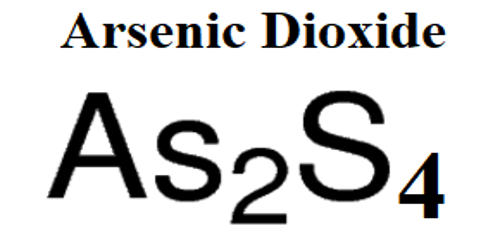Introduction
Smooth and efficient flow of saving-investment process is a prerequisite for the economic development of a country. Bangladesh, being a developing country and with an underdeveloped capital market, mainly depends on the intermediary role of commercial banks for mobilizing internal saving and providing capital to the investor. Thus, it matters greatly how well our financial sector is functioning. Looking at the performance of our financial sector for the last decade or so, we observe that our banking sector is heavily burdened with a high percentage of non-performing loans (NPLs). The latest data reveal that 13.23 % of total loans is classified in our banking sector. Although, the ratio was as high as 41.1% in 1999 and it came down gradually to the present level of 13.23 %, still it is much higher than the internationally accepted tolerable range and, thus, is a threat to our banking sector.
It is obvious that NPLs reduce banks’ profitability, as banks cannot appropriate interest income from their classified loans. NPLs reduce loanable funds by stopping recycling. Banks need to set aside a portion of their income as loan loss reserve to make up bad debt. A bank with a high percentage of NPLs suffers from erosion of the capital. All those adverse impact of NPLs on banks’ financial health such as low profitability and low capital base are clearly reflected in Bangladesh banking sector. The question arises as to why we are unable to solve this problem for such a long time? A number of studies have been undertaken to deal with the problem and to address this ‘default culture’ phenomenon. Emergence and accumulation of high scale of non-performing loans after independence starting from the nationalization of banks has been well discussed by a number of authors (Islam et al., 1999; Moral et al., 2000).
Several attempts have been made to explain the non- performing loans problem with some theories relating to political economy backed by empirical findings. Islam et al., (1999) in their study on bank loan default offered the idea of
‘comprador government’ and ‘comprador bourgeoisie’ developed by Paul Baran as an explanation of the behavior of Bangladeshi capitalists class where trading as opposed to manufacturing becomes the main business of the capitalists and they act as importers, indentors, sales agents, suppliers, etc. The same study also made an effort to explain the process of transfer of economic surplus through international trade based on Emmanuel’s theory of ‘unequal exchange’ which complements Baran’s explanation. Ahmad (1997) used three theoretical paradigms in his quest for a socio-political explanation of the bank loan default problem of Bangladesh, the rational actor theory, the pluralist instrumentalist theory and the organizational bargaining theory. Based on an investigation he mentioned some important factors as causes of loan default which includes lack of willingness to pay coupled with diversion of fund, willful negligence and belief that waiver may be available in the future, operational problems, inability to utilize production capacity, power failure, improper credit appraisal, natural calamity, and unfair taxation. Non-professional handling of assets both by the State-owned Commercial Banks and the private sector bank was reported as the main reasons for the accumulation of loan default problem in Bangladesh (Alam and Jahan, 1999). It included the Government directed credit for the loss making public sector enterprises and the private sector banks’ lending to insiders and connected parties. Prof. Rehman Sobhan(1991) in his study on debt default problem examined the nature and problems relating to poor repayment status of the two Development Finance Institutions- Bangladesh
Shilpa Bank and Bangladesh Shilpa Rin Sangstha.
The problem of non-repayment could have been minimized if there were sound and effective legal recovery mechanism. But, at least, until very recently the enforcement status of
The author is Assistant Professor, Bangladesh Institute of Bank Management.
lender’s recourse related (Money Loan Court Act, Bankruptcy Act, PDR Act) laws were weak. However, legal recovery got momentum after a major revision in the Money Loan Court Act, 2003. As on December 30, 2007 a total of Tk.34.27 billion was recovered against the claimed amount of Tk.66.65 billion under the Money Loan Court. Based on the above discussion the objectives of this paper is to assess the present situation of non-performing loans in our banking sector and
to raise some issues and observations which need to be
looked upon quickly for ensuring a financially sound banking sector. Now, we see the trend of NPLs in the next section during the period 1997-2007.
2. Present Status of Non-performing Loans
Non-performing loans include three categories of loan- sub- standard, doubtful and bad/loss, all of which are calculated on the basis of uniform criteria followed by each bank.
2. Bangladesh Bank Annual Report. Various Issues.
Table 2 presents the category wise percentage of NPLs, that is, sub-standard, doubtful and bad loans as percent of total classified loans. To make the things worse, the share of bad/ loss loan, which has no possibility of recovery other than legal measures, is very high. A high percentage of bad loans (76.62) out of total classified loan indicate the importance of
having a strong and effective legal system. That is, the success of the recovery attempt of this huge amount of bad loan will ultimately depend on how quickly banks can realize the loans through the legal process.
SOCBs in 2007. It is commented in Bangladesh Bank Annual
Report (2006-2007) that the NCBs and DFIs continued to have very high NPLs due to substantial loans provided by them on considerations other than commercial and under directed credit programmes during the 70s and 80s. However, recovery of NPLs, witnessed some signs of improvement mainly because of the steps taken with regard to internal restructuring of these banks to strengthen their loan recovery mechanism and recovery drive and write off measures initiated in recent years.
Non-performing asset is the reflection of a bank’s weak
financial condition. However, placing an adequate amount of
provision against the NPLs amount increase the risk absorbing capacity of a bank arising from the NPLs problem.
In this regard, Table 5 shows the amounts of provision required to be maintained and the amounts actually kept by
the banks from 1999 to 2006. We observe a huge shortfall in
maintenance of the required provision by the banks as a
whole during the years from 1999 to 2006. The main reason
for the continuous shortfall in provision adequacy is the inability of the SOCBs and some of the PCBs including those in problem bank category to make sufficient provisions due to inadequate profits and also transferred provision for write-off.
Note: 1. RP-Required Provision
2. PM –Provision Maintained
3. E (+)/S (-)-Excess/Shortfall
4. PMR-Provision Maintenance Ratio
Source: Bangladesh Bank Annual Report. Various Issues. Now, we can pinpoint our analysis by bringing some issues in front of the policy makers to deal with the NPL problem.
3. Issues and Observations
i. We have to keep in mind that our present loan
classification criteria are more relaxed than what is followed in the developed countries. Also, a classified loan becomes regular at the time of rescheduling which
is not the case in developed country. Therefore, the magnitude of the NPLs problem in Bangladesh is more severe if we take into account the standard norms of
classifying loan in developed countries.
ii. A substantial portion of non-performing loans is willful
in nature as was evidenced in some of the studies (Islam et al., 1999; Moral et.al, 2000). Successful entrepreneurs or profitable enterprise with a poor repayment record gives proof of that. The term ‘sick industries with rich industrialist’ was coined for that in the mid 90’s. Much is known by now about the political economy of ‘give and take’ process and collusion between borrowers and bank officials/political parties associated with this issue of willful default. Not much improvement in this area is expected unless there is strong political commitment and we can introduce a system of ‘reward and punishment’ in the banking sector.
iii. Loan recovery effort of banks is subject to limitation of
their resources. This necessitates the importance of
putting emphasis on recovery of big loan. One estimate made in this regard by the end of 1990s showed that top
500 defaulters accounted for 70 per cent of non-
performing loans. It was rightly opined by Dr. Wahiduddin Mahmud (2005) in fifth Nurul Matin Memorial Lecture that unless it can be demonstrated very clearly through action that these top defaulters are pursued with success, there would be little incentives for small defaulters to settle their debts.
iv. It is obvious that the high non-performing loans ratio
forces a bank to charge relatively higher lending rate from the borrowers than that could have been otherwise. So, the ethical norms will be violated if borrowers with good track record are not discriminated in the form of lower interest rate against the bad borrowers. But, do we observe such interest rate variation among the otherwise identical borrowers?
v. It was rightly opined by (Alam and Jahan, 1997) that the
collaterals do not have any effective role in the performance of a credit facility. Banks in Bangladesh have enough legally realizable collateral at their disposal to fall back upon; but the reality is that, due to the weak enforcement status of lenders recourse related laws, in many cases banks can not realize their full exposure by selling the mortgaged property. A basic policy shift from collateral based lending to the cash flow based lending is thus required for the improvement of the loan quality.
vi. Lack of transparency and inadequate information disclosure were believed as partly responsible for the East Asian Financial Crisis in the last decade and also in case of the prolonged crisis in the Japanese banking sector. Legal requirement of transparent and adequate
information flow make the bank management more accountable to the owners of banks and thus, helps to bring back the market discipline. Improved disclosure promotes market competition as the depositors start to discriminate between the good banks and the bad ones
(Mahmud, 2005). However, a delicate balance is required in this regard as over reaction by the depositors may lead to instability in the banking sector.
vii. Right from the beginning, the then nationalized commercial banks have played a very significant role in mobilizing deposit through a countrywide network of branches and also by serving the socio-economic purpose under the government directed credit program. But, we have to keep in mind that this process itself creates moral hazard problem and causes inefficiencies to grow. Banking profitability in the long run depends on a banks’ ability to collect and analyze information and to put optimal conditions to their loan supply. To develop this ability, financial institutions must be subjected to market discipline and appropriate prudential regulations. Traditionally, we do not have exit mechanism in the banking industry. So, it is natural that giving a sort of implicit guarantee to the banks will produce some imprudent behavior.
viii. It has become our convention that we make unnecessary delay in taking timely action to combat any deep-rooted problem. The on going non-performing loans problem of the banking sector is a classic example of that. A long time has elapsed in recognizing the severity of the problem and also in implementing a revised set of prudential norms, establishing more robust risk management techniques backed by well designed central bank’s supervisory role. Regulatory forbearance has the potentiality of making the situation more vulnerable, which ultimately needs very costly adjustment. The collapse of some big financial institutions in 1997 in Japan is a testimony of that. State-owned commercial banks and DFIs in Bangladesh have long been characterized with low profitability, low capital base and a very high percentage of non-performing loans. Is it taken for granted that the performance of state owned banks would always remain below that of the private owned banks? If not, then shouldn’t we come forward immediately to bring them in line with others.
ix. Real sector and financial sector are mutually interrelated in that the market condition of one affects the other. Bangladesh has consistently achieved a fair growth rate of around 5-6% in the last few years despite facing some bottlenecks in the area of infrastructural facilities and overall political instability. Macroeconomic management can be thought of as supportive to this
steady growth rate and we do not observe any such major policy error. The sub-optimal performance of the banking sector, thus, can neither be attributed to the problem in the real sector arising from the demand side nor to the major policy errors; rather it can be safely argued that the full potential of macroeconomic performance could not be achieved in the last few years due to inefficiency in the banking sector.
x. High percentage of non-performing loans in the banks generally causes ‘credit crunch’ or shrinkage in credit flow from the supply side of the bank. It is expected to be so because of more conservatism or cautiousness in approving new loans. Ogawa and Kitasaka (2000), Montgomery (2004) and Siddique (2004) in their study on non-performing loan problem of Japanese banking sector found the evidence of credit crunch. Interestingly, the overall credit flow of our financial sector shows a smoothly rising trend even in the backdrop of a large non-performing loan stock although one study found a
slump in the supply of industrial credit by the DFIs (Hoque, 2004). Does it indicate that we did not give due emphasis on recovery of loan? Although, no such rigorous studies have been undertaken to show the presence of credit crunch in our context, it also might be inferred that small sector and especially the enterprises with minimum track record are facing difficulty in getting financial assistance from banks.
xi. It is useful for policy purpose to regularly assess the lending attitudes of financial institutions. One direct way to assess the degree of credit crunch and to isolate the impact of supply side of loan from the demand side is to take into account the opinion of the firms about banks’ lending attitude which is carried out in some countries by the central bank. Bank of Japan conducts a survey across the enterprises to get the perceptions of economic agents. One of such surveys is focused on the lending
attitude of financial institutions as perceived by the responding enterprises. Each respondent is asked to give
one opinion out of three alternatives. The available options are 1) Accommodative 2) Not so Severe, and 3) Severe. Finally, a Diffusion Index (DI) is calculated by
subtracting the percentage share of enterprises
responding choice 3 from the percentage share of
enterprises responding choice 1. Can we think of
introducing such kind of exercises in Bangladesh by the central bank?
xii. Policy responsiveness of the behavior of economic agents is important in any crisis situation. We see noticeable improvements in our banking sector, especially in credit management due to a set of prudential guidelines, more strengthened supervision by the Bangladesh Bank backed by the major revisions of lenders recourse related laws. This raises our hope in managing the crucial dimensions of banking activities.
So, policy foresightedness, timeliness and dynamic response are essential in improving the performance status of the banks.
xiii. Finally, strengthening the securities market will have a positive impact on the overall development of the banking sector by increasing the competitiveness in the financial sector. In a developed capital market the range of portfolio selection is wide and people can compare the return and security of their investment among the banks and the securities market operators. As a result banks remain under some pressure to improve their financial soundness. However, developing a strong capital market remains at this stage of our development a very challenging task.
Conclusion Our banking sector is characterized by low profitability and inadequate capital base. The crux of the problem lies in the accumulation of high percentage of non-performing loans over a long period of time. The problem is most severe for SOCBs and DFIs. However, starting from a very high rate of 41.1% in 1999 it came down gradually to 13.23 % in 2007 according to latest published data. Still, it is very high by any standard. Unless it can be lowered substantially we will lose competitive edge in the wave of globalization of the banking service that is taking place throughout the world. We have had a two-decade long experience in dealing with the NPLs problem and much is known about the causes and remedies of the problem. So, it is very important for the lenders, borrowers and policy makers to learn from the past experience and act accordingly. n
















